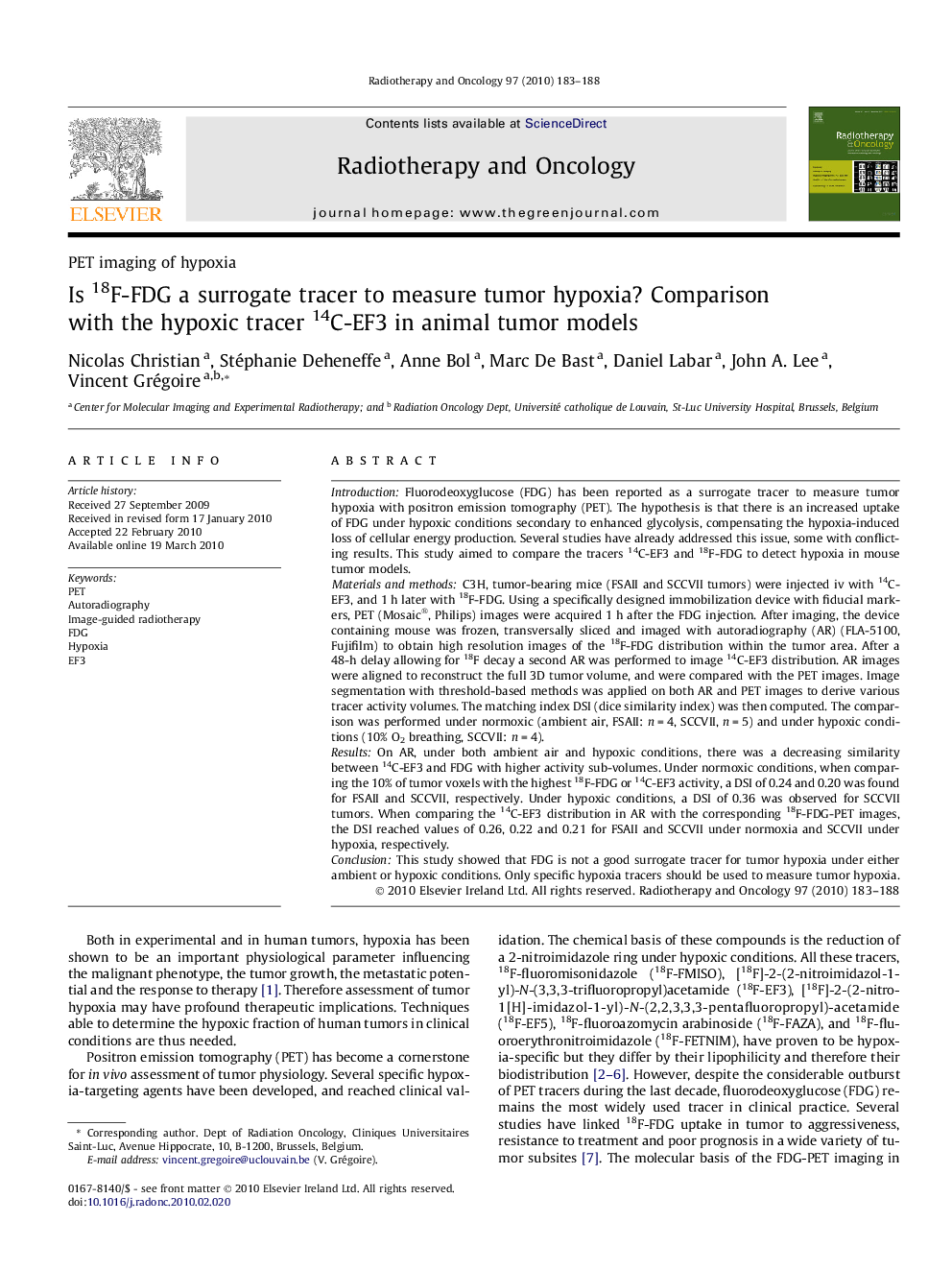| کد مقاله | کد نشریه | سال انتشار | مقاله انگلیسی | نسخه تمام متن |
|---|---|---|---|---|
| 2159145 | 1090851 | 2010 | 6 صفحه PDF | دانلود رایگان |

IntroductionFluorodeoxyglucose (FDG) has been reported as a surrogate tracer to measure tumor hypoxia with positron emission tomography (PET). The hypothesis is that there is an increased uptake of FDG under hypoxic conditions secondary to enhanced glycolysis, compensating the hypoxia-induced loss of cellular energy production. Several studies have already addressed this issue, some with conflicting results. This study aimed to compare the tracers 14C-EF3 and 18F-FDG to detect hypoxia in mouse tumor models.Materials and methodsC3H, tumor-bearing mice (FSAII and SCCVII tumors) were injected iv with 14C-EF3, and 1 h later with 18F-FDG. Using a specifically designed immobilization device with fiducial markers, PET (Mosaic®, Philips) images were acquired 1 h after the FDG injection. After imaging, the device containing mouse was frozen, transversally sliced and imaged with autoradiography (AR) (FLA-5100, Fujifilm) to obtain high resolution images of the 18F-FDG distribution within the tumor area. After a 48-h delay allowing for 18F decay a second AR was performed to image 14C-EF3 distribution. AR images were aligned to reconstruct the full 3D tumor volume, and were compared with the PET images. Image segmentation with threshold-based methods was applied on both AR and PET images to derive various tracer activity volumes. The matching index DSI (dice similarity index) was then computed. The comparison was performed under normoxic (ambient air, FSAII: n = 4, SCCVII, n = 5) and under hypoxic conditions (10% O2 breathing, SCCVII: n = 4).ResultsOn AR, under both ambient air and hypoxic conditions, there was a decreasing similarity between 14C-EF3 and FDG with higher activity sub-volumes. Under normoxic conditions, when comparing the 10% of tumor voxels with the highest 18F-FDG or 14C-EF3 activity, a DSI of 0.24 and 0.20 was found for FSAII and SCCVII, respectively. Under hypoxic conditions, a DSI of 0.36 was observed for SCCVII tumors. When comparing the 14C-EF3 distribution in AR with the corresponding 18F-FDG-PET images, the DSI reached values of 0.26, 0.22 and 0.21 for FSAII and SCCVII under normoxia and SCCVII under hypoxia, respectively.ConclusionThis study showed that FDG is not a good surrogate tracer for tumor hypoxia under either ambient or hypoxic conditions. Only specific hypoxia tracers should be used to measure tumor hypoxia.
Journal: Radiotherapy and Oncology - Volume 97, Issue 2, November 2010, Pages 183–188